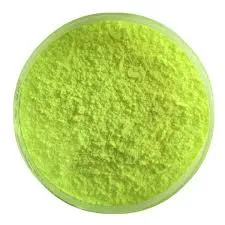Understanding the Types of Active Pharmaceutical Ingredients (APIs)
Active Pharmaceutical Ingredients (APIs) are the biologically active compounds in pharmaceuticals that produce the intended therapeutic effects. They are crucial components of medications, determining both their efficacy and safety profiles. Understanding the types of APIs can help in drug development, regulation, and informed healthcare decisions. This article will explore the various categories of APIs, their sources, and their roles in modern medicine.
1. Small Molecule APIs
Small molecule APIs are typically low molecular weight compounds that can be chemically synthesized. They form the backbone of many traditional medications, especially those targeting acute conditions. The benefits of small molecule APIs lie in their ability to be administered orally, their cost-effectiveness, and the extensive library of compounds available for drug design. Common examples include aspirin (acetylsalicylic acid) and atorvastatin, which are used for pain relief and cholesterol management, respectively.
These small molecules often interact with specific biological targets within the body, such as enzymes or receptors, to exert their therapeutic effects. However, they may have limitations, including potential side effects and issues with bioavailability.
2. Biologics
Biologics, or biological pharmaceuticals, are derived from living organisms, including humans, animals, or microorganisms. These APIs are larger, more complex molecules like proteins, antibodies, or nucleic acids. Biologics have transformed treatment paradigms for numerous diseases, particularly in fields like oncology, immunology, and infectious diseases.
Examples of biologics include monoclonal antibodies such as trastuzumab, used in cancer treatment, and insulin, which is essential for diabetes management. The development and manufacture of biologics are often more complex and expensive than that of small molecules, leading to increased costs for patients and healthcare systems. Nonetheless, their specificity can result in fewer side effects and improved therapeutic outcomes.
types of active pharmaceutical ingredients

3. Natural Products
Natural product APIs are derived from natural sources, including plants, animals, and minerals. These substances have been used in traditional medicine for centuries and continue to be vital in modern pharmaceuticals. Many drugs have been developed directly from natural substances, showcasing their importance in drug discovery.
For instance, paclitaxel, derived from the Pacific yew tree, is used in cancer treatment, while digoxin, obtained from the foxglove plant, is employed in heart conditions. The challenge with natural product APIs lies in variability in composition and availability, which can affect their consistency as therapeutic agents.
4. Synthetic Biologics and Biosimilars
As the demand for biologics continues to rise, so has the development of synthetic biologics and biosimilars. Synthetic biologics are engineered using biotechnology to mimic the functions of naturally occurring biologics. Biosimilars, on the other hand, are highly similar replicas of approved biologic drugs, offering similar effectiveness and safety but typically at reduced costs.
Conclusion
Active Pharmaceutical Ingredients play a pivotal role in the healthcare landscape. By understanding the various types—including small molecules, biologics, natural products, and synthetic options—stakeholders can better navigate the complexities of drug development and therapeutic applications. As science continues to advance, the development of new APIs will remain crucial in addressing unmet medical needs and improving patient outcomes globally. The ongoing innovation in this field promises not only to enhance our arsenal against existing diseases but also to pave the way for novel treatments that could reshape the future of medicine.

